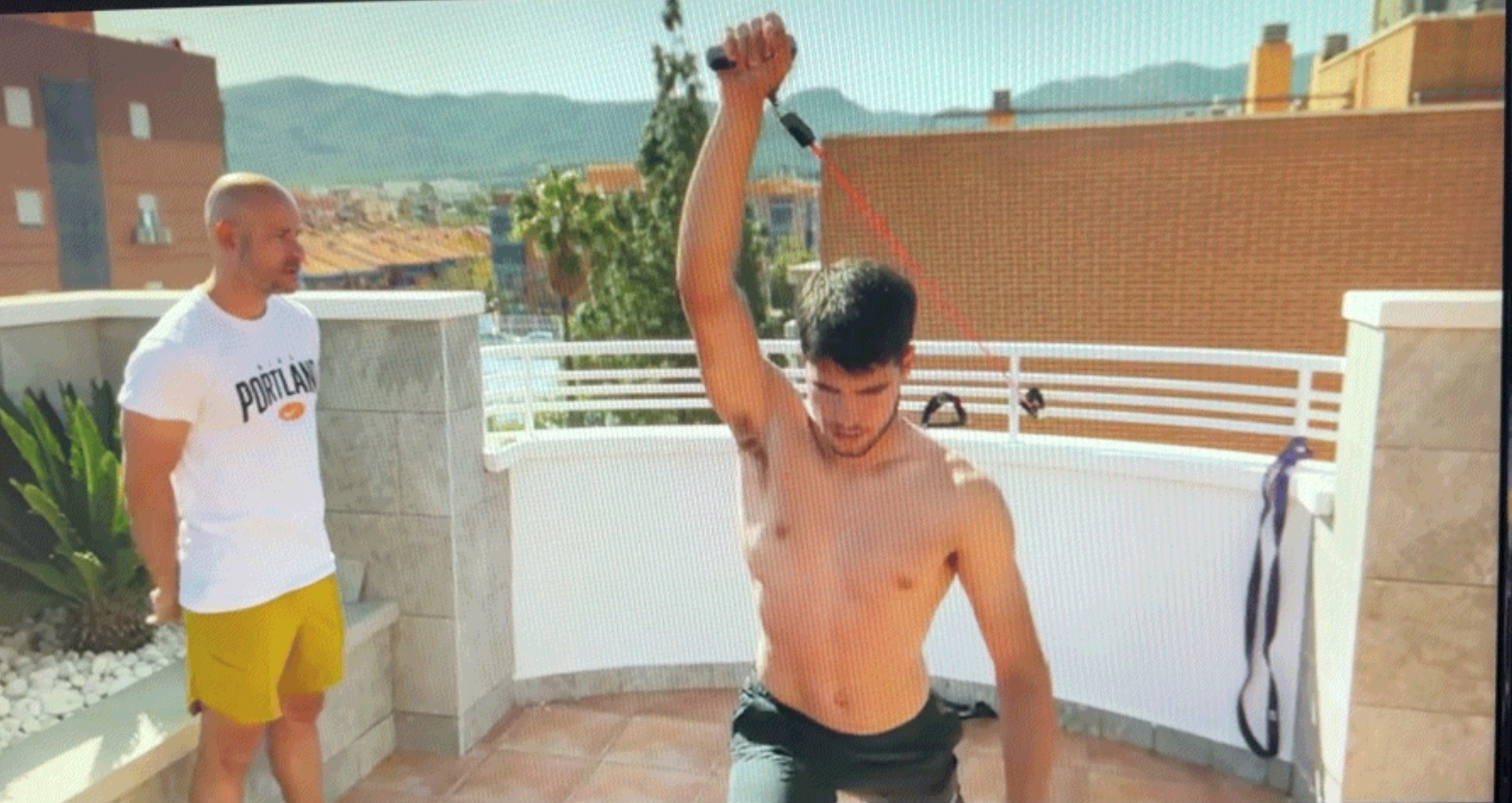Our sequential march through the training techniques glimpsed in the Netflix docuseries ‘Break Point” continues this week with Felix Auger Aliassime. In Episode 5 of Season 1, FAA is seen performing Horizontal Abducted External Shoulder Rotations using a “superband.”
The rotator cuff muscles are vital for shoulder stability and arm rotation when playing tennis. Efficient stroke production requires repetitive and dynamic arm movements, especially on the serve and overhead. The rotator cuff muscles and tendons provide support and enable a full range of motion for the shoulder joint.
Horizontal Abducted External Shoulder Rotations support the development of the muscles in the rotator cuff. That can improve power in tennis strokes while minimizing the potential for a shoulder injury. Strong rotator cuff muscles also support the efficiency of shot production as the stability in the shoulder joint preserves energy.
FAA is seen performing the exercise using a superband that is most likely anchored by a coach. This exercise can also be done with a band attached to a fixed object.
To perform a Horizontal Abducted External Shoulder Rotation correctly, hold the superband in one hand while facing the anchor point with the arm locked at a 90° angle. The forearm starts parallel to the ground and is then rotated to a vertical position while keeping the elbow as stationary as possible. The rep is completed by returning the arm back down to the starting position.
Superbands are great for tennis players, as they integrate well with strength training, agility drills, and dynamic warm-up routines that are ubiquitous to the sport. These resistance training devices support functional movement patterns relevant to tennis. Superbands are lightweight and can be easily carried in a racquet bag.
Professional tennis players frequently use Horizontal Abducted External Shoulder Rotations in their strength training. It is also a staple in pre-match dynamic warm-up routines for muscle activation. Improved strength, endurance, and flexibility of the rotator cuff muscles contribute to overall shoulder health and optimal tennis performance.
Players who don’t include Horizontal Abducted External Shoulder Rotations as a recurring part of their tennis fitness routines are flirting with future rotator cuff issues. It is a small investment in equipment and time to improve tennis performance and prevent injury.
Fiend At Court participates in the Amazon associates program and receives a paid commission on any purchases made via the links in this article. Details on the disposition of proceeds are available on the “About Fiend at Court” page.



